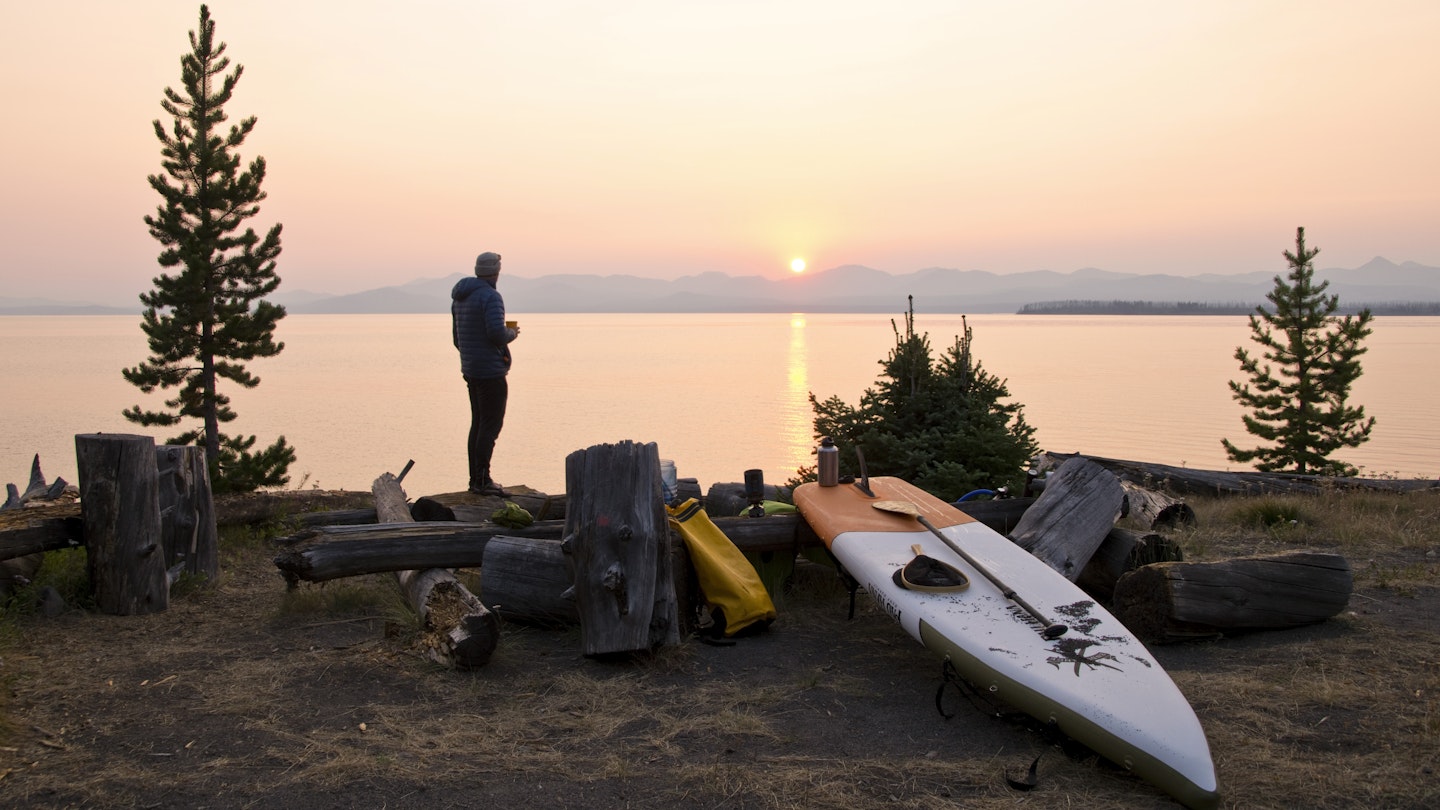Paddling in Yellowstone National Park: An Adventurer’s Guide
Yellowstone National Park is an adventurer’s playground. Whether exploring on foot, by car, or via water, the vast landscape offers thousands of miles of trails, scenic lakes, and streams to discover. While traveling by car often means navigating congested roads, particularly during bison migrations, exploring by paddle opens up a new world of adventure.
Paddling is prohibited on all streams within the park, yet several lakes and ponds are accessible for paddlers. The following lakes are the crown jewels of Yellowstone National Park. Whether you prefer kayaking, canoeing, or stand-up paddleboarding, here is your essential guide to paddling in Yellowstone.
Paddling Yellowstone’s Lewis Lake
Located deep in the southern region of the park, Lewis Lake welcomes both day paddlers and overnight adventurers. While enjoying its shores, you may encounter boaters casting their lines for rainbow, brown, and lake trout. Featuring a campground right on its banks (opening July 1), Lewis Lake serves as a perfect sanctuary for paddlers who wish to spend their days on the water and enjoy campfire evenings at their vehicles.
Experiencing Shoshone Lake by Paddle Board
Connected to Lewis Lake by a small channel, Shoshone Lake is largely enjoyed by paddlers and hikers alike. Surrounded by trees and thermal features, this expansive lake is the second-largest waterbody for paddling in the park, offering a challenging journey for those keen to explore its depths. However, the true adventure lies in the backcountry camping sites that line Shoshone’s shores. Unpack your dry bags, set up your tent, and let the tranquility of the wilderness embrace you; visiting Shoshone is a must-see experience.

Exploring Yellowstone Lake by Paddle
This entire national park is actually a dormant super-volcano, and Yellowstone Lake represents its flooded caldera. With 110 miles of shoreline and a depth of 394 feet, it is a formidable natural treasure. Accessing most of its shoreline requires paddling, where the wildlife present is often unseen by humans.
The Yellowstone River flows into and out of the lake, providing rich fishing opportunities for lake trout and the park’s only native species: the Yellowstone cutthroat trout. A multi-day trip is strongly recommended, if not necessary, to fully experience the serene beauty of Yellowstone Lake’s deep bays, characterized by nearly freezing water temperatures and unparalleled solitude.

Planning a Backcountry Trip to Yellowstone
Thorough planning is essential for car camping and backcountry paddling (refer to GoTravelDaily’s Yellowstone National Park Planning Guide). Campgrounds that accept reservations often fill up months before the summer, and if you can’t secure a site, you may choose from several first-come, first-served campgrounds, including Lewis Lake Campground, conveniently close to both Lewis and Shoshone Lakes. It is highly recommended that you arrive before 11 am to secure a spot at this popular access point.
For Yellowstone Lake, two campgrounds accepting reservations include Grant Village in the West Thumb area and Bay Bridge on the north shore (both opening June 17). The Fishing Bridge RV campground, which offers essential sewer, electrical, and water hookups for RVs, is closed through 2020. If you’re unable to find accommodations inside the park, additional campgrounds are available a short drive away, as well as options just outside the park.

Gear Requirements for Yellowstone Paddlers
Every paddler must have a personal flotation device (life preserver) on board. While you may not be required to wear it, the National Parks Service mandates that it remains on your kayak, canoe, or paddleboard at all times. Furthermore, you are required to have a whistle or air horn for communication in low visibility conditions, along with a beacon of light for navigation. A headlamp is adequate; however, a cell phone does not fulfill this requirement.
Paddling Regulations in Yellowstone
The paddling season is brief due to park regulations, running from the Saturday of Memorial Day weekend through the first Sunday in November. Before entering the water, your craft must undergo inspection by park personnel for invasive aquatic species at either Grant Village Backcountry Office or the Bridge Bay Ranger Station. Permits for paddling cost $5 for a week or $10 for the entire season.

Backcountry Paddling in Yellowstone
The allure of paddling in Yellowstone lies in the opportunity to witness its stunning backcountry. For any excursions into Yellowstone’s wilderness, you will require a backcountry permit. Starting June 15, 2020, the park will issue these permits, which often fill quickly, so planning ahead is advisable. Many permits can be reserved in advance, while others are allocated through a lottery system via mail, fax, or in-person applications. Be sure to check online for available campsites and contact the office for further reservation details.
Camping in Yellowstone
When camping, maintain a distance of 200 feet from any water source and remain within designated camping areas. For cooking purposes, a food storage device such as a bear container or food bag hung in a tree is essential. While firearms are prohibited in the park, bear spray is strongly recommended and is available for rent at the airport or from kiosks within the park. Understanding how to avoid accidents and bear encounters is crucial before embarking on your paddling adventure.

Weather in Yellowstone
While obtaining your permit, park rangers will not hesitate to remind you about the unpredictable weather that can affect your paddling experience. Summer often brings thunderstorms, frequently occurring in the afternoon, and can involve lightning, hail, and rain. Wind gusts can reach up to 40 knots on open water, which can pose serious dangers for paddlers. Rangers recommend staying close to shore and avoiding open water crossings unless absolutely necessary.
Wind conditions can change rapidly and exceed forecasts significantly, potentially causing surfable waves which are particularly hazardous for those in the middle of the lake. Unfortunately, there have been fatalities due to capsizing and hypothermia in these waters. However, on most days, the weather is remarkable, offering some of the most memorable moments in your outdoor adventures.





